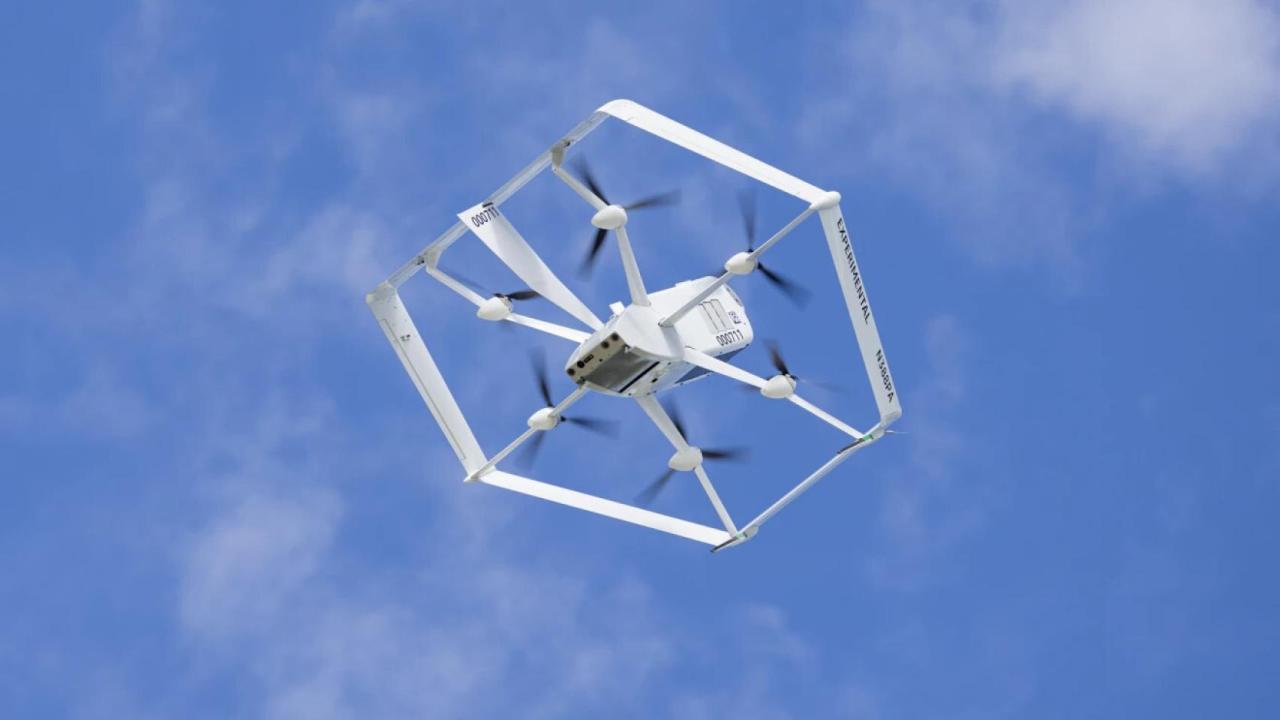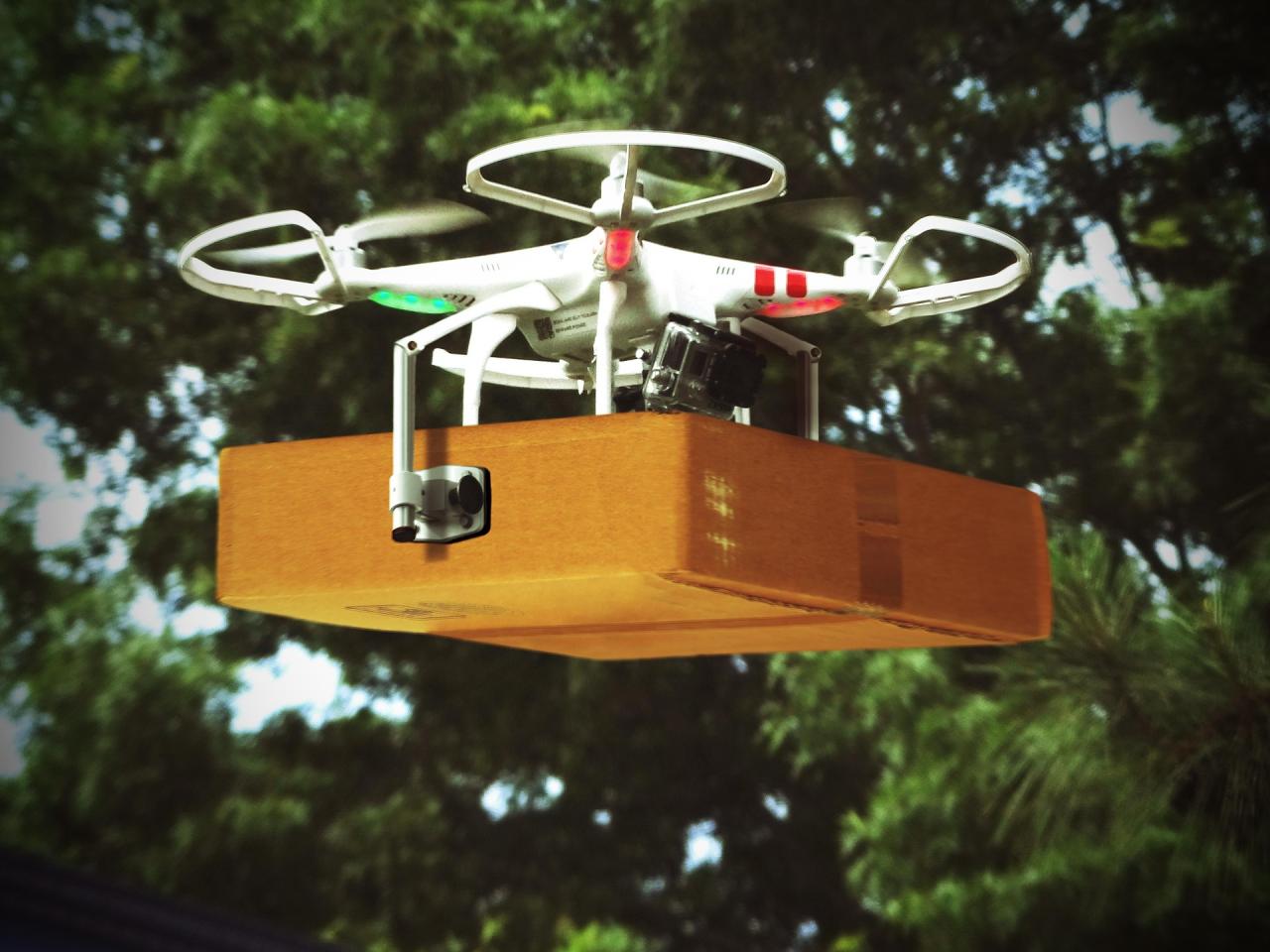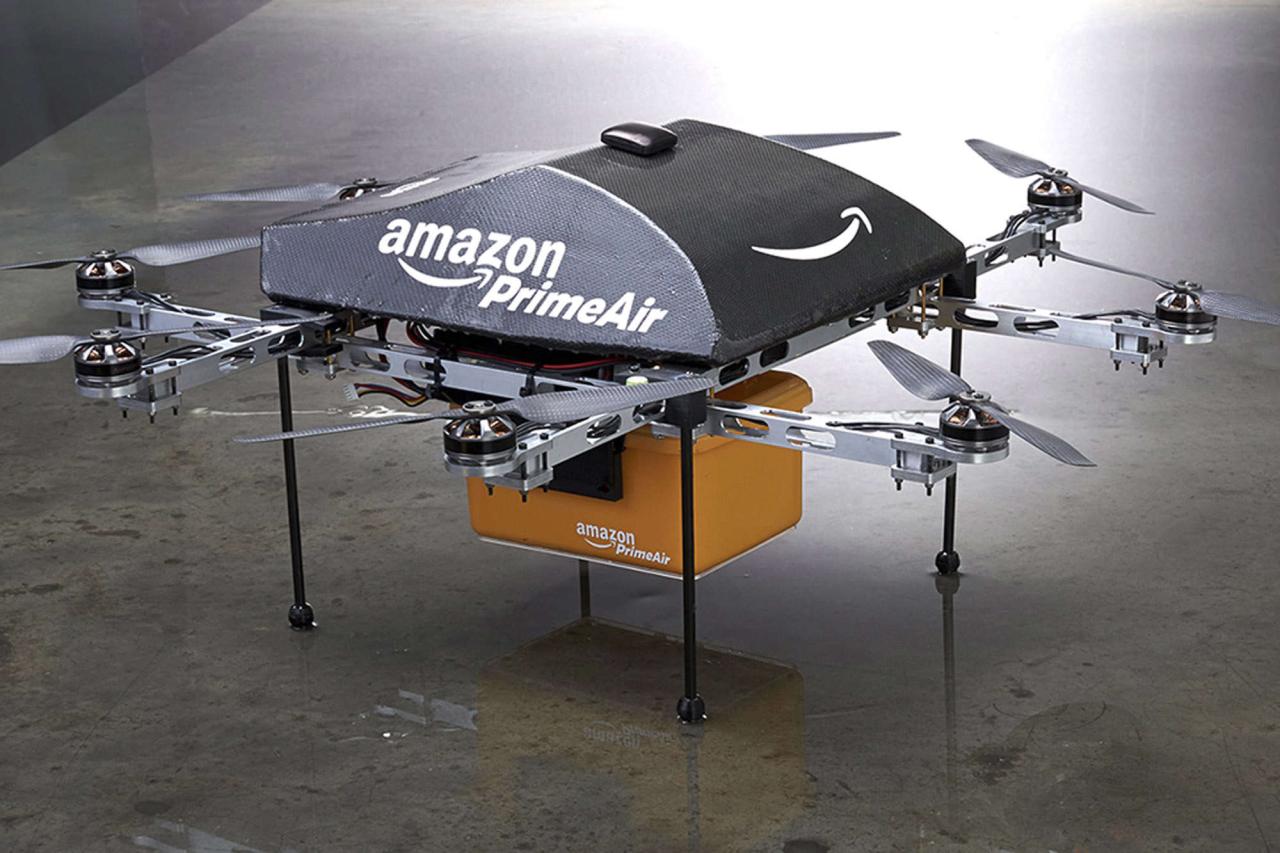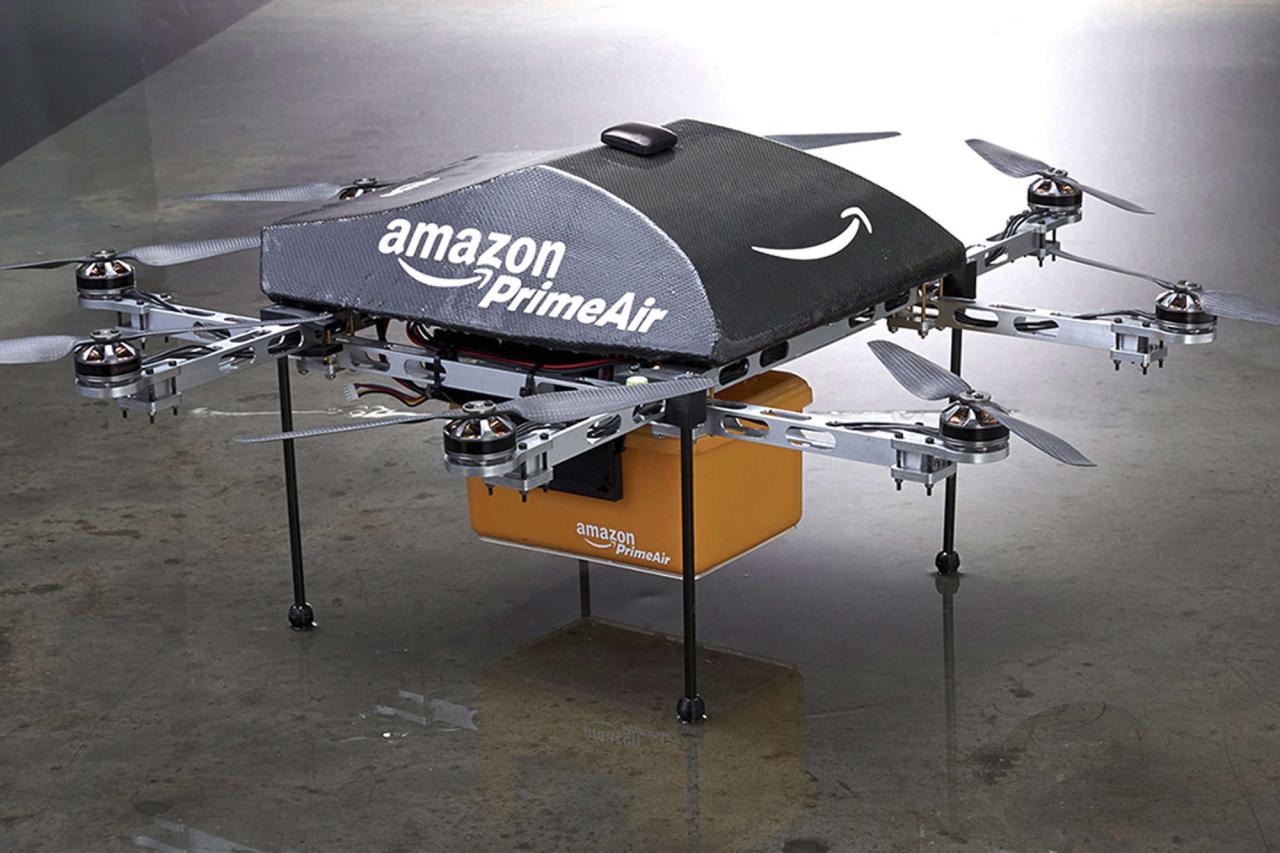Amazon drone delivery locations are rapidly expanding, revolutionizing how we receive packages. This exploration delves into the current state of Amazon’s drone delivery program, examining its geographical reach, infrastructure needs, customer experiences, economic impacts, and future trajectory. We’ll uncover the challenges and opportunities presented by this innovative delivery system, offering a comprehensive overview for anyone interested in the future of logistics.
From the types of packages eligible for drone delivery to the infrastructure required to support these operations, we’ll examine the key aspects that shape this evolving landscape. We’ll also consider the broader societal and economic consequences, including job displacement and environmental concerns, providing a balanced perspective on this transformative technology.
Amazon Drone Delivery Program: A Comprehensive Overview
Amazon’s drone delivery program, Amazon Prime Air, represents a significant shift in the logistics landscape. This initiative aims to revolutionize package delivery through the use of autonomous drones, promising faster and more efficient service. This article delves into the current status, infrastructure requirements, customer experience, economic impacts, and future trends of this innovative program.
Current Amazon Drone Delivery Program Status
Amazon Prime Air’s drone delivery service is currently operational in a limited number of locations, primarily focusing on suburban and rural areas. The program’s scope is gradually expanding, but it remains a relatively nascent technology in widespread application. The types of packages eligible for drone delivery are also restricted to smaller, lighter items to ensure safe and efficient transport.
Amazon’s expanding drone delivery network is reaching more locations, aiming for faster and more efficient shipping. However, recent incidents like the orlando drone show accident highlight the importance of robust safety protocols and regulations for all drone operations. This incident underscores the need for continuous improvement in drone technology and safety measures before widespread drone delivery becomes truly commonplace.
| City | State | Start Date (Estimated) | Number of Deliveries (Estimated) |
|---|---|---|---|
| College Station | Texas | 2022 | Thousands |
| Lockeford | California | 2022 | Hundreds |
| McKinney | Texas | 2022 | Thousands |
| San Marcos | Texas | 2022 | Thousands |
While precise delivery numbers are not publicly available, drone delivery speed is significantly faster than traditional ground-based delivery, particularly for short distances. This speed advantage is offset by limitations in payload capacity and weather conditions, which can hinder drone operations.
Infrastructure Requirements for Drone Delivery Locations
Successful implementation of drone delivery hinges on a robust infrastructure capable of supporting autonomous flight operations. This infrastructure must ensure safety, efficiency, and regulatory compliance.
- Drone Landing Pads: Secure, designated areas for drones to land and take off, equipped with sensors and lighting for safe operation.
- Charging Stations: Facilities for efficiently charging drone batteries, ensuring continuous operational readiness.
- Communication Networks: Reliable communication systems (e.g., 4G/5G, satellite) for real-time drone tracking, control, and data transmission.
- Maintenance Facilities: Locations for regular drone maintenance, repair, and inspection to ensure operational safety and reliability.
- Air Traffic Management Systems: Integration with existing air traffic control systems to prevent collisions and ensure safe airspace utilization.
Hypothetical Drone Delivery Hub Layout: Imagine a central hub situated in a strategic location with ample space. The hub would contain a central control tower for monitoring drone flights, multiple charging stations organized in a grid pattern for efficient charging, and a dedicated maintenance area for repairs and inspections. Landing pads would be distributed around the perimeter, providing clear and safe takeoff and landing zones.
The layout would prioritize efficiency of movement and minimize operational bottlenecks.
Regulatory hurdles include obtaining necessary permits and approvals from aviation authorities, navigating airspace restrictions, and adhering to safety regulations. Environmental considerations encompass noise pollution mitigation, potential impact on wildlife, and responsible disposal of drone components.
Customer Experience and Acceptance of Drone Delivery
Customer feedback on Amazon Prime Air is generally positive, although data is limited due to the program’s restricted scope. The factors influencing customer adoption include convenience (faster delivery), cost (competitive pricing), and perceived safety (reliable technology).
- “Received my package within minutes! Amazingly fast and convenient.”
- “The drone delivery was a cool experience. It was surprisingly quiet.”
- “A bit skeptical at first, but the whole process was smooth and efficient.”
Compared to traditional delivery, drone delivery offers a unique experience characterized by speed and visual appeal. However, limitations on package size and weather dependency can lead to less flexibility than traditional methods.
Economic and Societal Impacts of Drone Delivery Locations, Amazon drone delivery locations

Widespread drone delivery implementation could bring substantial economic benefits, including reduced transportation costs, increased efficiency, and new job creation in drone-related industries. However, it could also lead to job displacement in traditional delivery sectors. Societal implications are also noteworthy, requiring careful consideration.
| Job Type | Impact | Reason | Examples |
|---|---|---|---|
| Delivery Drivers | Negative | Automation of delivery tasks | Ground-based couriers, package handlers |
| Drone Pilots/Operators | Positive | Increased demand for skilled drone operators | Drone maintenance technicians, flight controllers |
| Drone Engineers/Technicians | Positive | Need for skilled professionals to maintain and repair drones | Software developers, mechanical engineers |
Concerns regarding privacy (data collection by drones), security (potential for drone hijacking or misuse), and noise pollution require careful attention and mitigation strategies.
So you’re curious about Amazon drone delivery locations? Knowing where they operate is key to understanding the future of fast shipping. To see what’s possible with drone technology on a larger scale, check out the amazing light shows at the orlando drone show ; it’s a great example of advanced drone capabilities. Then, you can better appreciate how Amazon’s smaller-scale delivery drones are shaping the logistics landscape.
Future Trends and Technological Advancements in Amazon Drone Delivery

Amazon’s drone delivery network is projected to expand significantly in the next 5-10 years, with an increase in delivery locations and package types. Technological advancements will play a critical role in this expansion.
Projected Timeline (Illustrative):
- 2024-2026: Expansion to more urban areas, increased payload capacity.
- 2027-2029: Integration of AI-powered autonomous navigation, improved battery technology.
- 2030-2035: Widespread adoption, delivery of a broader range of goods, integration with other delivery systems.
Emerging technologies like AI, autonomous navigation, and improved battery technology will enhance drone delivery capabilities, addressing limitations such as range, payload capacity, and weather dependency. These advancements will lead to more efficient, reliable, and safer drone delivery operations.
Closing Summary

Amazon’s drone delivery program is more than just a novel delivery method; it represents a significant shift in the logistics industry. While challenges remain regarding infrastructure, regulation, and public acceptance, the potential benefits—increased efficiency, reduced delivery times, and expanded access to remote areas—are substantial. As technology continues to advance, we can anticipate even greater sophistication and wider adoption of drone delivery, reshaping the way we receive goods in the years to come.
Amazon’s expanding drone delivery network is reaching more locations, but reliable tech is key. Think about the recent issues, like the one described in this article about the orlando drone show malfunction , which highlights the challenges of large-scale drone operations. These incidents underscore the need for robust safety measures as Amazon continues to roll out its drone delivery services to new areas.
The future of delivery is taking flight.
FAQ Compilation: Amazon Drone Delivery Locations
What are the weight and size restrictions for Amazon drone deliveries?
Currently, there are weight and size limits on packages eligible for drone delivery. These limits vary depending on the drone model and are generally smaller than traditional ground deliveries.
How much does Amazon drone delivery cost?
The cost of Amazon drone delivery is usually the same as standard shipping; it’s not a separate premium service.
Is Amazon drone delivery available everywhere?
No, Amazon drone delivery is currently limited to specific locations and is gradually expanding. Check Amazon’s website for the latest service areas.
What happens if a drone malfunctions during delivery?
Amazon employs multiple safety measures, including redundancy systems and real-time monitoring. In case of malfunction, protocols are in place to ensure safe landing and retrieval of the drone and package.
